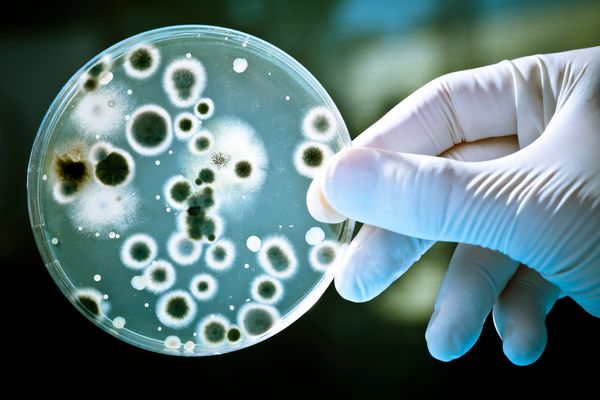
Some types of bacteria are known for their ability to survive extreme conditions, from high temperatures to chemical attacks to dehydration. But for how long are they really viable? In 2014, a team of scientists dried a collection of bacteria, sealed those specimens away in small glass vials and in 500 years, some researcher will have the honor of bringing the long-lived study to a close.
The five-century-long experiment was conceived by researchers at Scotland's University of Edinburgh, who teamed up with German and American scientists in hopes of advancing humankind's understanding of bacteria longevity. A major catch? None of them (or their great-grandchildren) will be around to see the results.
Advertisement
In an email interview, Charles Cockell, one of the scientists involved with the experiment, said the motivation for the experiment was straightforward. "Most science experiments work on grant or human lifespans, but nature works over long time periods. We wanted to create an experiment that was more aligned to the lengths of time of interest for studying microbes."
For the experiment, team members filled 800 vials with one of two types of bacteria: Chroococcidiopsis or Bacillus subtilis. The former is a true survivor, a very primitive bacterium often found in extremely inhospitable environments, from hot springs to deserts. The latter is one the most-studied bacterium in all of science, one that can revert to a dormant state (in spore form) when subjected to environmental challenges. The glass vials the scientists filled were completely sealed off from air and half of them were shrouded in lead to thwart the effects of radiation or other potential interferences that could cause DNA damage.
Every other year (for a quarter century), scientists will check on the bacteria to see if they're still viable. Then, the checkup schedule shifts to once every 25 years until the 500-year test is over.
The actual tests are easy, simply requiring a basic rehydration process and counting the bacteria colonies. But what's the best way to describe the experiment to people 400 years into the future? Instructions were printed on paper and also stored to a flash drive, with the explicit request that researchers update the verbiage and technologies when they perform their 25-year checks.
The first analyses were conducted in 2016, with results published in December 2018 in PLOS. The gist? After two years of isolation, bacteria spores demonstrated hardly any decrease in viability. Some of the unlucky surviving spores were then purposely exposed to tougher conditions, like high salt levels or a space-like vacuum — and of course, these specimens showed an increased loss of viability.
So what's the best-case scenario of such a long-term project? "There isn't an ideal outcome as such," Cockell says. "We want to learn how quickly microbes die and what mathematical function describes their death over century time scales."
Some bacteria are so durable that they can remain viable for tens of millions of years, provided they're preserved in one form or another. For example, in 1995, scientists revived bacteria immersed in 25-million-year-old tree sap, and also from the carcasses of creatures like beetles trapped in amber 135 million years ago. In 2000, scientists declared that bacteria in New Mexico salt deposits were still viable — after 250 million years.
Advertisement
